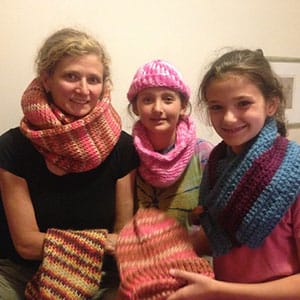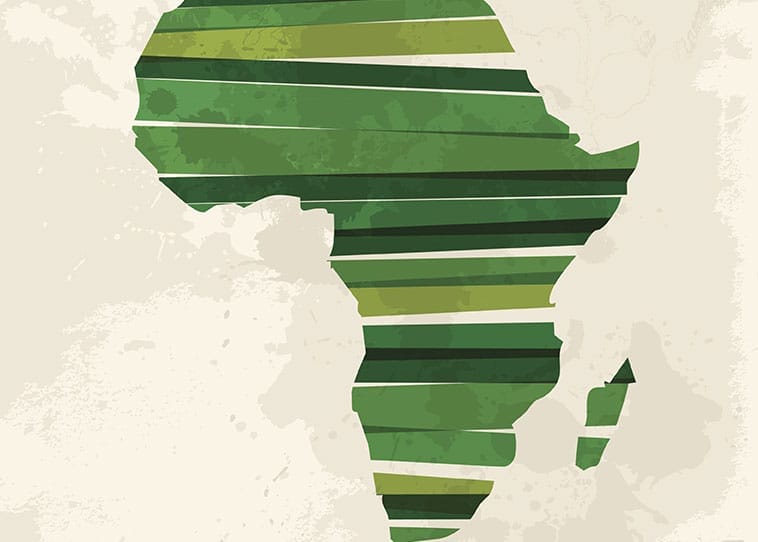Collins Nyamadzawo walked into the rural Zimbabwean school where he was a volunteer and caught sight of two students sitting on the floor, one using the other’s back on which to write. A teacher, energy consultant and entrepreneur in Harare, Collins, now 27, says that the memory of those students stuck with him for two years—until a solution to the lack of desks came to him. Collins lights up a room when he talks about his idea: to use recycled plastic waste to create lap desks. If Collins can figure out how to manufacture and sell the lap desks, he will elegantly solve two issues that plague Zimbabwe: rid the streets of plastic waste and give students a proper place to write.

Social entrepreneur Collins Nyamadzawo with his lap desk prototype
Collins and 60 other Zimbabweans, Zambians and Namibians are participants in a social entrepreneurship bootcamp organized by an alum of the Mandela Washington Fellowship, Irene Chikumbo, and the U.S. embassies in Zimbabwe, Zambia and Namibia.
In late May and early June 2015, I had the privilege of leading six days of programming for the bootcamp. Other trainers for the bootcamp, which is taking place over the course of several months, include Gretchen Zucker from Ashoka, Kelly McGowan from Going Upstream and Fahad Hassan from Alma.
Like Collins, most of the participants had the social aspect of their business ideas nailed. The bootcamp focused on how social entrepreneurs can survive (and thrive) without relying on traditional donor funding. A crucial first step to success is for an entrepreneur to develop a differentiated product or service that the market is willing to pay for.
We viewed Professor Steve Blank’s “How to Build a Startup: The Lean LaunchPad” lectures developed for his free massive open online course (MOOC) to better understand the “product market fit” between value proposition and customer segments. I also shared videos from my own Case Western Reserve University MOOC, Beyond Silicon Valley, to give them perspective on how communities around the world are supporting the growth of entrepreneurial ecosystems. For homework, I asked the students to make calls to real potential customers, ask if they would be willing to pay for their products and services, and report back the next day.
After class, Chembo Litana got on the phone with a fair trade shop in the U.S. and asked the manager how she could sell her organization’s colorful, hand-knitted scarves.
“I learned that social business is still business,” said Chembo, programs manager for the International Trust for the Education of Zambian Orphans (ITEZO). “Competing and making a profit is just as fundamental as the social side. My product should be good enough to be bought even without the social story. The social story should be icing on the cake or a convincing factor.”

Knitters for the social enterprise ITEZO producing items for sale
For eight years, Maria Newaya has been trying to find a way to help farmers with deteriorating grazing resources in Iikokola, her home village in the Oshikoto Region in northern Namibia. I met Maria, a committed and passionate sustainable agriculturalist, at the bootcamp in Namibia. She had big dreams, including developing a system to connect farmers to better markets, rather than not selling at all or selling at informal markets. Maria spoke with potential customers and came to a realization that her “idea was just too broad to implement, not measurable and not realistic.” For the first time Maria considered her business plan from an investor standpoint. She is refining her plan to make it, as she puts it, “more realistic.”
Like Maria and Chembo, Collins also gathered critical information through the customer discovery exercise. Collins said he was surprised to find that his potential clients and partners were interested in helping make lap desks because they wanted to “feel like they were a part of something greater than themselves.” The next step for Collins is to test the hypothesis that involving clients and partners in the production will actually increase customer adoption (and sales) of his product.

Michael Goldberg’s wife Stacy and his daughters Kate and Anna enjoying their ITEZO knitted scarves
The hard reality of entrepreneurship is that even the most innovative ideas cannot translate into a successful enterprise unless there are customers willing to pay for the product or service.
I played an active role in Chembo’s customer discovery process and found three satisfied customers for ITEZO’s scarves—my wife and two daughters loved the products I bought for them. Hopefully, Collins, Maria, Chembo and the other social entrepreneurs who attended the bootcamp will find success on their journey to turn their social concepts into thriving businesses.
Editor’s note: The original version of this article appeared on the Huffington Post on June 24, 2015.

























